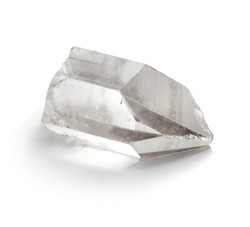Surface modification of quartz blocks to eliminate toxicity
Crystalline silica is an essential raw material for producing many of the goods used in our everyday lives. It is widely used in many manufacturing industries, such as the ceramics sector, but prolonged inhalation of respirable crystalline silica (RCS) can cause the lung disease silicosis. Although silica toxicity can be practically nullified by coating the RCS particles with certain substances, until now there is no record that silica treatment has not been embraced by industry. Changing this situation was the aim of the project SILICOAT(opens in new window) (Industrial implementation of processes to render RCS safer in manufacturing processes). Researchers successfully developed cost-effective, tailor-made quartz coating technology based on stable reactive chemical groups on the surface of quartz particles. The employed techniques block RCS particle toxicity at source with notable success, without interfering with the manufacturing processes of the ceramics industry. Although research on substances that cancel silica toxicity can be traced back to 1960, none of these substances were used on an industrial scale. SILICOAT researchers first identified a number of economical coating agents that block silica reactivity in biological media. The team treated quartz with propyltrimethoxysilane, a commercial aminosilane and nano-alumina. In vitro toxicity results showed total suppression of cytotoxicity and a decrease of genotoxicity by more than 80 %. Organosilane coatings were found to be stable under physiological conditions. In particular, the protective effect of the aminosilane coating was confirmed in vivo in animals sacrificed 90 days after administrating treated quartz. The treatment designed at pilot scale was demonstrated on industrial scale at the facilities of the four participating small and medium-sized enterprises (SMEs). Researchers demonstrated that quartz coating treatment could be incorporated in the ceramic manufacturing processes of all SMEs, offering impressive toxicity reduction similar to that obtained on pilot scale. Overall, SILICOAT designed technically and economically feasible treatment to render the quartz used in the traditional ceramic industries intrinsically safe. Unlike other techniques, the SILICOAT treatment addresses RCS exposure risk at its source: the substance itself. This development could prevent quartz-related health diseases across the EU's ceramics sector.







